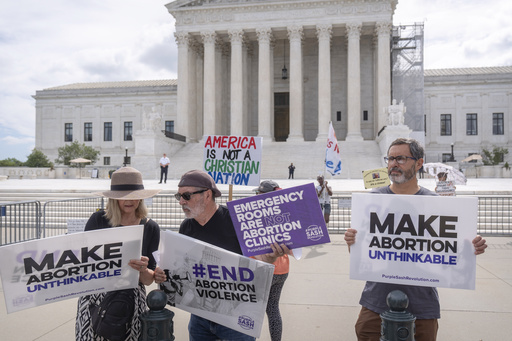Abortion has seen a subtle increase in prevalence, even amid stringent bans and restrictions in most Republican-controlled states. The legal and political discourse around this sensitive issue is far from over, reflecting ongoing struggles regarding its future.
It has now been two and a half years since the U.S. Supreme Court made the landmark decision to overturn Roe v. Wade, enabling states to enact abortion bans. Since that pivotal ruling in Dobbs v. Jackson Women’s Health Organization, the landscape surrounding abortion policies has been in a state of evolution.
Data reveals that abortions have become slightly more frequent compared to the period prior to the Dobbs ruling. Notably, this hasn’t led to a decline in the overall number of abortions performed; in fact, there have been a few more abortions each month across the nation, despite a significant drop in states enforcing strict bans where abortion rates have nearly fallen to zero. Ushma Upadhyay, a public health social scientist, highlighted that while abortion bans may not stop abortions from happening, they do significantly alter the way that care is accessed.
Accessibility issues are particularly pronounced for low-income, minority, and immigrant women, leading to substantial challenges for those living in states with bans. Many have to rely on travel or seek out abortion pills as their primary methods of accessing services.
With the implementation of bans, the role of abortion pills has become more significant. Prior to the Dobbs ruling, about half of all abortions already involved the use of pills, a figure which has now risen to approximately two-thirds. Research from the Guttmacher Institute indicates that telehealth has transformed how these prescriptions are provided, resulting in approximately 1 in 10 abortions in banned states being facilitated through telehealth by the summer of 2024. This shift has led to increased tensions surrounding the use and legality of abortion pills, particularly evident in recent legal actions taken against healthcare providers prescribing them across state lines.
Traveling for abortions has also risen considerably as abortion clinics in states with bans have either closed or ceased performing abortions. Growing networks are connecting women with services in states where abortion remains legal, making travel a more common solution. For instance, recent findings suggest that the number of Texas residents seeking abortions in New Mexico has more than doubled compared to local residents, while Kansas has similarly seen a spike of Texan abortion-seekers.
Since the Supreme Court’s decision, the regulatory landscape for abortion continues to shift rapidly due to legislative actions. A significant change occurred in Florida, where a new law enforcing a ban on abortions after the sixth week of pregnancy took effect in May. This transformation has shifted Florida from a state that attracted individuals seeking abortions to one that now sends them elsewhere. Data indicates that abortions in Florida decreased significantly, with around 30% fewer in May compared to earlier in the year.
Despite the restrictions, some states have witnessed a growth in clinics providing abortion services. States like Illinois, Kansas, and New Mexico have opened new facilities or expanded existing ones, contributing to a slight overall decrease in the number of abortion providers in the U.S. from 799 in May 2022 to 792 by this November.
Another critical issue that has arisen post-Roe relates to how hospitals handle pregnancy complications. The Biden administration has mandated that hospitals must provide abortions when necessary to avert serious health risks. However, challenges to this guidance, particularly from states like Texas, have raised significant concerns regarding patient safety. Reports indicate that more than 100 pregnant women have faced denials of care in emergency situations since the ruling, illuminating the dire consequences of restricted access to abortion services.
Public sentiment on abortion rights remains largely supportive among voters, with numerous statewide ballot measures reflecting this trend. Of the 18 reproductive rights-related questions posed since the Roe decision, advocates succeeded in 14. Support for the legality of abortion in most instances has slightly increased since 2020, even as voters simultaneously leaned towards Republican candidates during recent elections.
As the discourse on abortion continues to evolve, the interplay between access, legal challenges, and public opinion remains a critical facet of the American societal landscape.



